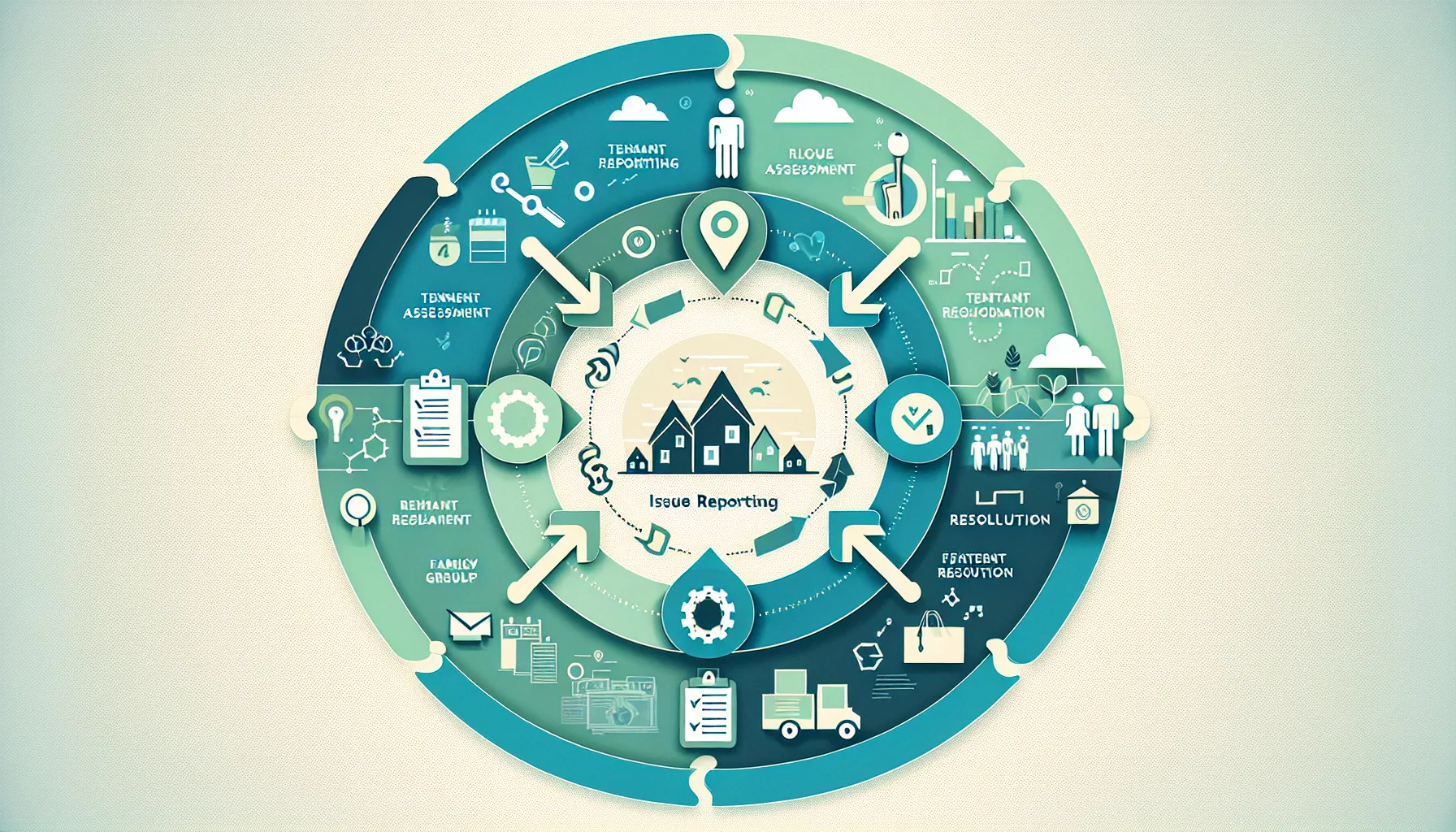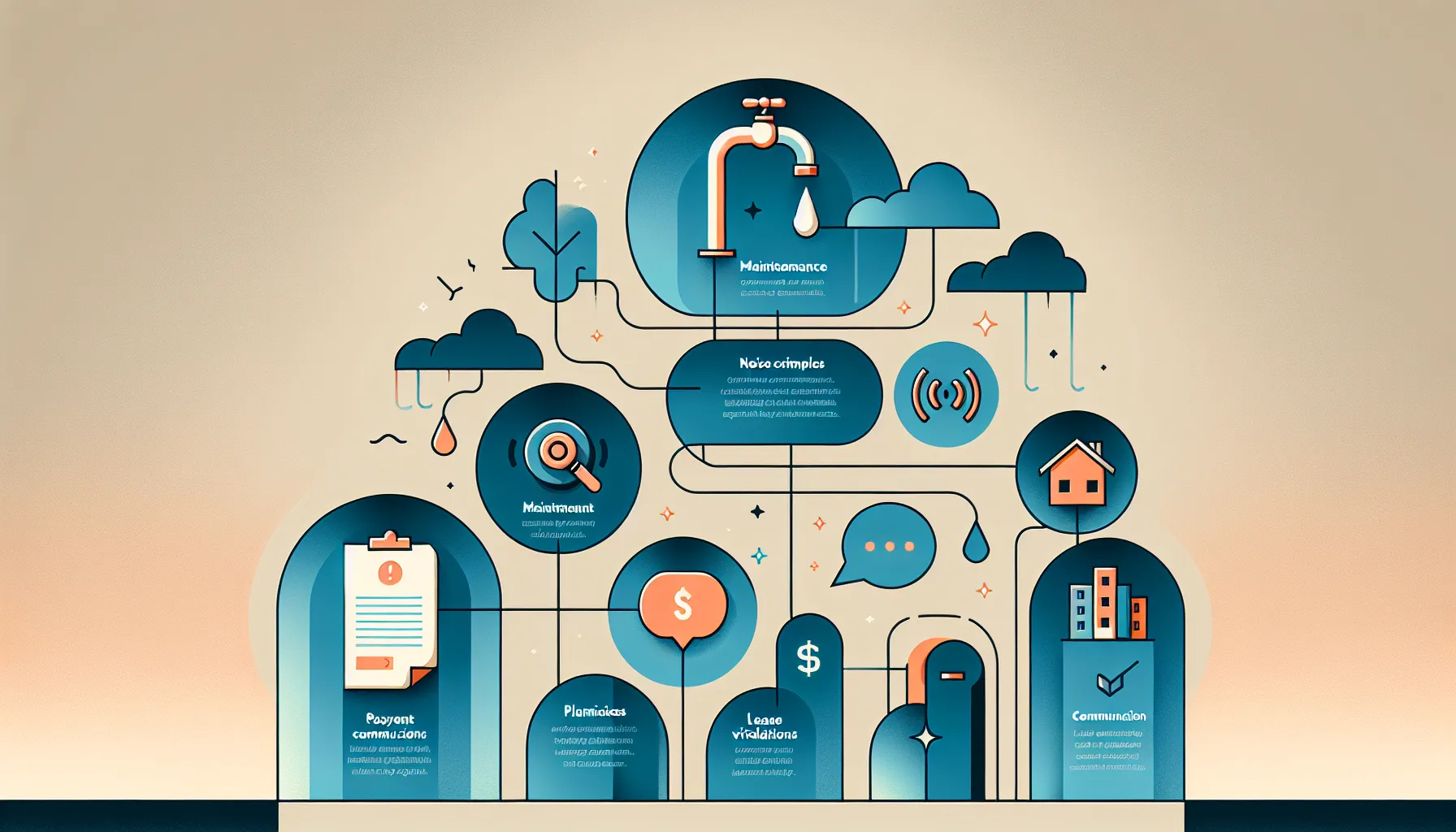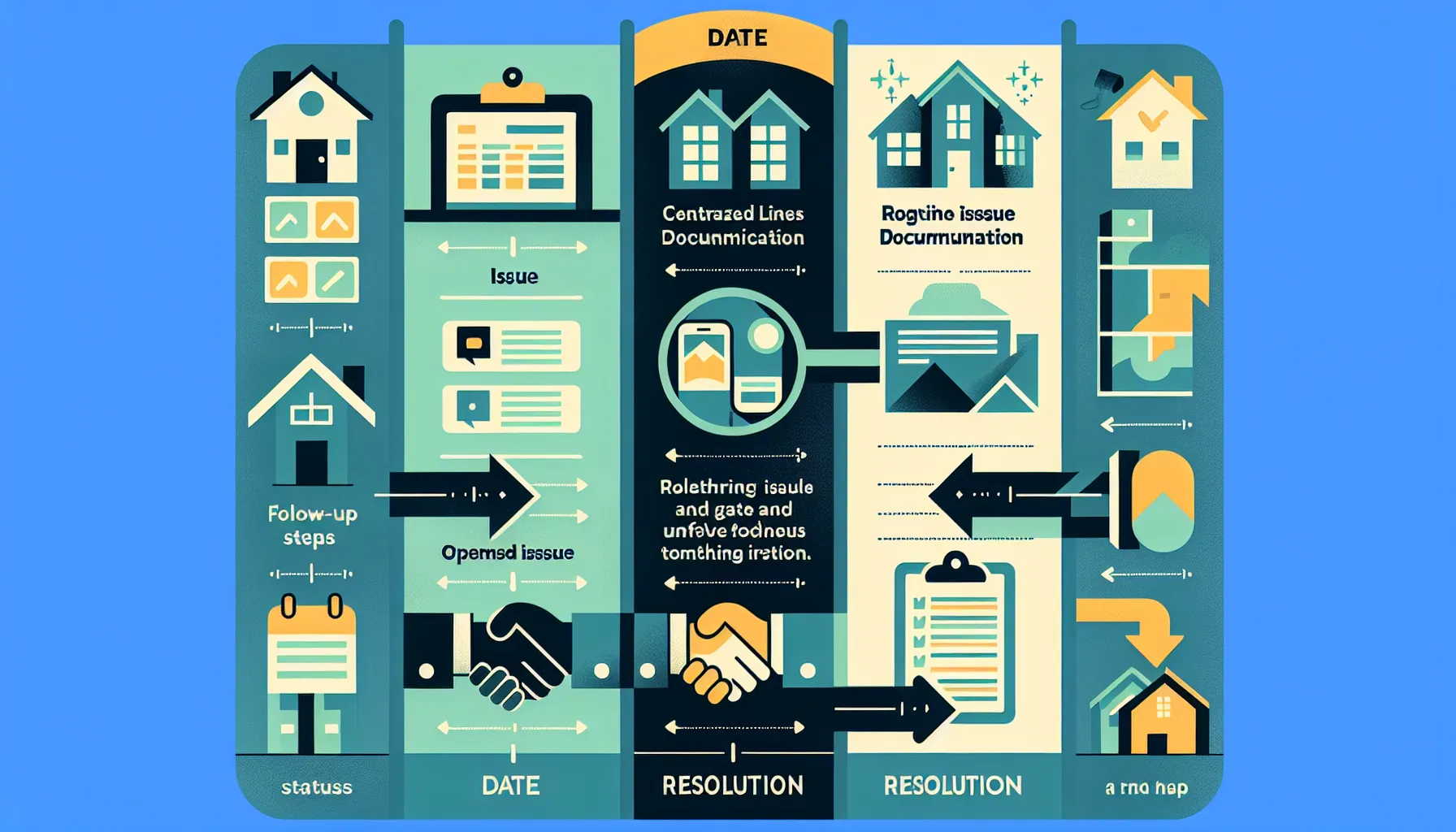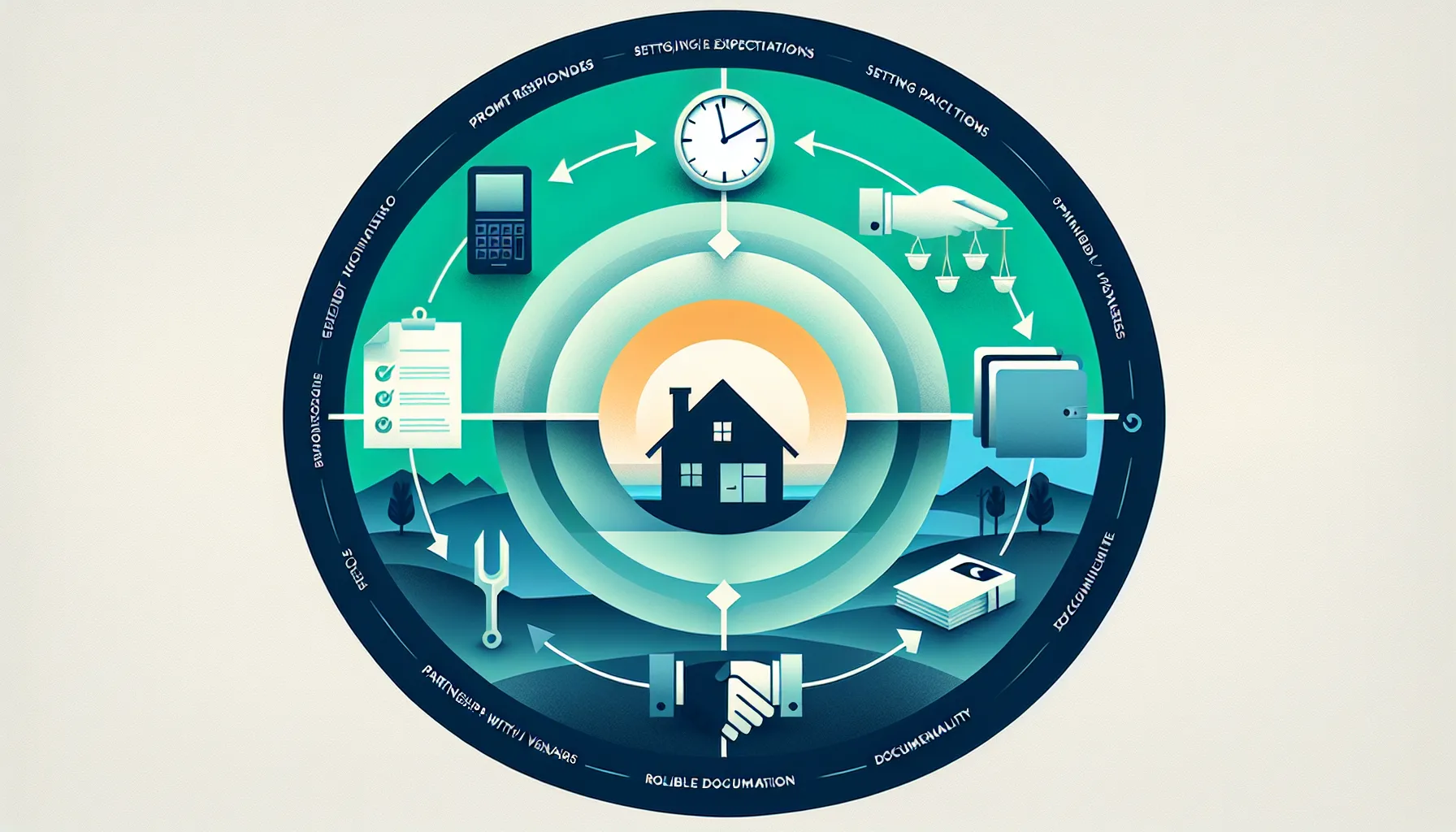Managing rental properties in Orinda can be rewarding, yet there are always challenges that require a steady hand and a thoughtful response. If you’re a homeowner living away from your investment, or an investor juggling multiple properties, you know that tenant issues can appear without warning. How do you keep track of every concern, large or small, while making everyone feel heard and respected? Over the years, I’ve seen firsthand that clear communication and tracking matter more than anything else.
This guide is for anyone who wants to minimize stress, maintain great relationships, and protect their property’s value. By focusing on proven tenant issue tracking strategies, you’ll find you can create genuine peace of mind for both yourself and your tenants. Let’s jump into the real-world tools and approaches that keep Orinda rentals running smoothly.
Key Takeaways
- Consistent Orinda tenant issue tracking ensures concerns are addressed early, fostering long-term positive relationships.
- Centralized documentation, open communication, and regular inspections are essential for effective property management in Orinda.
- Leveraging technology like issue tracking software and digital inspections streamlines tenant communication and repairs.
- Prompt responses and clear expectations build tenant trust and help prevent small issues from escalating.
- Maintaining detailed records of all tenant interactions protects both landlords and tenants, ensuring legal compliance in Orinda.
Understanding Tenant Issues in Orinda

Every property manager or landlord in Orinda faces tenant issues at some point. From repairs that need attention right away to misunderstandings about lease terms, these concerns can take many forms. In my experience working in the East Bay, the secret isn’t to try to eliminate problems completely, instead, it’s about finding effective ways to track and respond to them.
Tenants appreciate prompt action, and owners value knowing that their investment is protected. The local market in Orinda is unique, with a mix of long-term residents, families, and some renters who’ve relocated just for a year or two. This diversity translates to different expectations and communication styles.
When I speak with other owners, they often ask, “How do I know my tenants are happy, and their needs are being met?” My answer is always: consistent tracking and communication. By paying close attention to what comes up, I’ve found that issues don’t spiral into larger problems. Instead, they’re handled early, making for happier, longer-lasting rental relationships.
Common Types of Tenant Issues

Tenant issues can vary widely, so it helps to recognize the most common types I see in Orinda:
- Maintenance and Repairs: Leaky faucets, broken appliances, and HVAC concerns pop up all the time. Tenants want to know these are handled quickly.
- Noise Complaints: Whether it’s a neighbor or the rental unit itself, noise can become a real sticking point.
- Lease Violations: Sometimes tenants overlook pet policies, parking rules, or occupancy limits.
- Payment Delays: While most tenants pay on time, life happens. Clear records make a big difference in handling late payments fairly.
- Communication Gaps: Misunderstandings about rules or procedures can lead to friction if not documented and addressed.
From my perspective, none of these issues are insurmountable, as long as I have a clear process for logging them. Recognizing patterns over time also allows me to anticipate certain problems before they get out of hand. For example, if multiple tenants report problems with a particular appliance model, I know it’s time to consider a replacement before future headaches arise.
Effective Methods for Tracking Tenant Issues

I’ve discovered that the core of solid property management in Orinda is a reliable system for tracking tenant concerns. But what works best? Here’s what’s worked for me, and what I recommend for other landlords too:
1. Centralized Documentation
I always use a single platform or spreadsheet to record every issue reported. Whether it’s as simple as a Google Sheet or a dedicated property management app, the trick is making sure nothing slips through the cracks. I include categories like the date reported, a brief description, status, and follow-up actions.
2. Open Communication Channels
Tenants are more likely to report issues early if they know exactly how to reach you. I make sure tenants have my contact information, and I encourage email or text for non-urgent matters. For emergency situations, I provide a direct phone number.
3. Routine Inspections
By scheduling regular inspections, usually semi-annual, I spot emerging issues myself. Tenants trust that I’m invested in the upkeep of their home, and I get early warning before maintenance requests become urgent.
4. Follow-Up Reminders
As soon as an issue is resolved, I confirm with the tenant that the problem is fixed. This extra step is easy to overlook, but it builds trust and helps me close the loop on open items.
All of this adds up to a more organized approach, ensuring tenants stay satisfied and maintenance costs remain under control.
Best Practices for Resolving Tenant Concerns

Over time, I’ve seen that resolving tenant concerns isn’t just about fixing things, it’s about relationships. Here’s how I keep everyone happy and informed:
- Respond Quickly: Even if I can’t solve the problem immediately, I make a point to acknowledge the issue within 24 hours. Tenants want to feel heard.
- Set Clear Expectations: I let tenants know how long a repair might take or what the next steps are. This transparency helps avoid frustration.
- Collaborate with Reliable Vendors: I pick contractors I trust to respond promptly and perform quality work. When tenants see repairs completed right the first time, it increases their confidence in my management.
- Document Everything: For larger concerns, I put our communications in writing. That protects everyone and keeps things clear.
- Stay Objective: Sometimes emotions run high, especially around lease violations or payment delays. I approach these conversations calmly, explain policies, and offer solutions where possible.
Tenants consistently tell me they appreciate knowing what’s happening, even if a repair takes an extra day or two. I find that being proactive and approachable saves headaches for everyone and promotes longer tenancies.
Leveraging Technology for Efficient Issue Management

Technology has changed how I manage tenant concerns, and I encourage others to embrace new tools as well. Here’s what’s made the biggest difference for me in Orinda:
Issue Tracking Software
There are platforms specifically developed for property managers to log and monitor maintenance and communication. These allow tenants to submit requests online, complete with photos, and keep a transparent record.
Automated Notifications
I set up automatic reminders for both tenants and myself. If there’s a maintenance appointment scheduled or a payment due, everyone gets a note.
Digital Inspections and Reporting
Conducting inspections and documenting findings through digital apps means everything is archived and easy to share. If you’re managing from out of town, these digital records provide reassurance that your property is well-maintained.
Secure Document Storage
Lease agreements, communications, and photos are filed in secure cloud storage. This means I can retrieve documents wherever I am, crucial for quick decision making.
Adopting these systems doesn’t just make my job easier: tenants notice the smoother service and often comment on how quickly their requests are handled.
Legal Considerations for Orinda Landlords and Tenants
Keeping up with local and state regulations is a major part of issue tracking in Orinda. I take this seriously because failing to document or respond to tenant issues can lead to far bigger legal headaches.
- Fair Housing: I make sure to treat every tenant the same and document all requests to show I’m being consistent.
- Deposit Disputes: Good records are essential when tenants move out. Detailed reports of repairs and correspondence help avoid unnecessary disputes about security deposits.
- Habitability Standards: California law requires landlords to keep properties safe and habitable. I track repair requests so I’m always one step ahead of any code issues.
- Notice Requirements: Whether it’s an inspection or a planned repair, I provide written notice per local ordinances. Digital records help me stay compliant easily.
I can’t stress enough how valuable accurate, organized documentation is, not just for legal protection, but for peace of mind. It allows me to respond proactively to the needs of both tenants and regulations.
Conclusion
Orinda tenant issue tracking isn’t just about solving problems, it’s about building trust, preventing bigger challenges, and nurturing positive relationships. Through clear processes, effective technology, and timely communication, I’ve learned that tenants feel valued and owners feel secure.
Whether you have one property or a growing portfolio, investing in good systems pays dividends in satisfied tenants and properties that stand the test of time. What steps will you take this year to improve how you track tenant concerns? I’m confident that, with the right focus and tools, your rental experience in Orinda will be smoother and more rewarding for everyone involved.
Frequently Asked Questions about Orinda Tenant Issue Tracking
What is Orinda tenant issue tracking and why is it important?
Orinda tenant issue tracking refers to the systematic process of logging, monitoring, and resolving concerns reported by tenants in Orinda rental properties. It is important because it helps maintain clear communication, prevents minor issues from escalating, and builds trust between landlords and tenants.
How can landlords in Orinda track tenant issues efficiently?
Landlords in Orinda can efficiently track tenant issues by using centralized documentation, such as spreadsheets or property management software. These tools allow for organized recording of all concerns, status updates, and communication, ensuring no issues go unresolved and tenants feel heard.
What types of tenant issues are most common in Orinda rentals?
Common tenant issues in Orinda include maintenance and repair requests, noise complaints, lease violations, payment delays, and communication gaps. Tracking these issues helps landlords address them promptly, preventing larger problems and maintaining good tenant relationships.
Is it necessary to use property management software for tenant issue tracking in Orinda?
While not strictly necessary, property management software streamlines tenant issue tracking in Orinda by enabling online submissions, automated reminders, and secure document storage. These platforms increase efficiency and transparency, but smaller landlords can effectively use customized spreadsheets if needed.
How does tracking tenant issues help with legal compliance for Orinda landlords?
Accurate issue tracking helps Orinda landlords comply with local and state laws, such as fair housing, habitability, and notice requirements. Well-documented records demonstrate consistent treatment of tenants, support deposit dispute resolutions, and ensure timely responses to repair requests, reducing legal risks.
What should I do if a tenant repeatedly violates lease terms despite issue tracking?
If a tenant repeatedly violates lease terms, document all incidents clearly and address concerns promptly. Communicate expectations, provide written warnings per your lease and local laws, and consider involving legal counsel if violations persist. Keeping thorough records supports your position if further action is needed.
